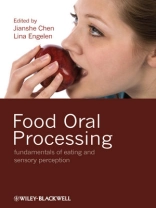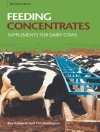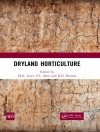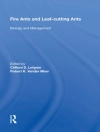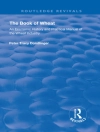This volume provides an overview of the latest research findings on the physics, physiology, and psychology of food oral consumption, as well as the experimental techniques available for food oral studies. Coverage includes the main physical and physiological functionalities of the mouth; the location and functionalities of various oral receptors; the main sequences of eating and drinking, and the concomitant food disintegration and destabilisation. Chapters also explain oral processing and its relation to flavour release and texture perception, and there is an introduction to the principles of food rheology as they relate to eating.
Food Oral Processing is directed at food scientists and technologists in industry and academia, especially those involved in sensory science and new product development. It will also be of interest to oral physiologists, oral biologists and dentists. The book will be a useful reference for undergraduate and postgraduate students of these disciplines.
Cuprins
Here is the revised text with only person names wrapped in asterisks:
Preface xiv
Contributors xvii
Part One Oral Anatomy and Physiology 1
1 Oral Cavity 3
Luciano José Pereira
1.1 Introduction 3
1.2 The oral cavity 3
1.3 Salivary glands and saliva secretion 6
1.4 Orofacial muscles 7
1.5 The tongue 9
1.6 Concluding remarks 12
Acknowledgements 12
References 13
2 Oral Receptors 15
Lina Engelen
2.1 Introduction to oral receptors 15
2.1.1 Babies sense the world around them through the mouth 15
2.1.2 Receptors 15
2.1.3 Innervation and transduction 16
2.2 Taste 17
2.2.1 Taste receptors 18
2.2.2 Taste molecules and modalities 20
2.2.2.1 What substances give rise to the different sensations? 20
2.3 Mechanoreception 22
2.3.1 Tactile stimulation 22
2.3.2 Function during eating 23
2.3.3 Mechanoreceptors in the mouth 24
2.3.3.1 SA1 – form and texture 25
2.3.3.2 Fa 1 25
2.3.3.3 SA2 – shape and position of tongue 25
2.3.4 Proprioceptors 26
2.3.4.1 Proprioception 26
2.3.4.2 Muscle spindles 27
2.3.4.3 Golgi tendon organ 27
2.3.4.4 Mechanoreceptors as proprioceptors 28
2.3.5 Periodontal receptors 28
2.3.5.1 Function of periodontal receptors 28
2.3.6 Signal transduction and central processing 29
2.4 Nociception 30
2.4.1 Nociceptors 30
2.4.2 Nociception in food 31
2.4.3 Nociceptive transduction 32
2.5 Thermal perception 33
2.5.1 Thermal sensation 33
2.5.2 Thermoreceptors 34
2.5.3 Thermal transduction 34
2.5.4 Temperature and food 35
2.5.5 The thermoreception and nociception relation 36
2.6 Olfaction 36
2.6.1 Olfaction and food 36
2.6.2 Olfactory receptors and transduction 37
2.7 Concluding remarks 38
References 38
3 Role of Saliva in the Oral Processing of Food 45
Guy Carpenter
3.1 Introduction 45
3.2 Control of salivary secretion 46
3.3 Functionalities of saliva 50
3.3.1 Salivary interactions with the oral mucosa 51
3.3.2 Perception of taste 52
3.3.3 Protection of the oral environment 53
3.4 Saliva in bolus formation, swallowing and oral clearance 54
3.4.1 Bolus formation and swallowing 54
3.4.2 Post-mastication oral clearance 54
3.5 Concluding remarks 56
Acknowledgements 56
References 57
Part Two FOOD ORAL MANAGEMENT 61
4 Oral Management of Food 63
Andriesvan der Bilt
4.1 Introduction 63
4.2 Factors influencing oral function 63
4.2.1 Dental factors 66
4.2.2 Jaw muscle activity (EMG) and bite force 67
4.2.3 Masticatory performance 68
4.2.4 Swallowing of food 69
4.2.5 Saliva 70
4.3 Influence of food characteristics on chewing 72
4.3.1 Influence of food type on muscle activity, chewing force and jaw movement 74
4.3.2 Crispy food 75
4.3.3 Influence of food type and volume on swallowing 75
4.3.4 Muscle activity and jaw movement in various phases of chewing 78
4.4 Neuromuscular control of chewing and swallowing 79
4.4.1 Cortical masticatory area 80
4.4.2 Central pattern generator 80
4.4.3 Peripheral feedback 80
4.4.4 Simulated chewing experiments 81
4.4.5 Neuromuscular control of chewing crispy food 83
4.5 Concluding remarks 84
References 85
5 Breaking and Mastication of Solid Foods 95
Carolyn F. Rossand Clifford L.Hoye Jr.
5.1 Introduction 95
5.2 Mechanical properties and food texture 96
5.3 Characterisation of mechanical properties 96
5.4 Oral selection of food particles 99
5.4.1 The role of the tongue 99
5.4.2 Selection function 100
5.5 Breakage function 101
5.5.1 Definition of breakage function 101
5.5.2 Crack initiation and propagation 103
5.5.3 Correlations between breakage function and food mechanical properties 105
5.5.4 Limitations of breakage function 107
5.6 Concluding remarks 107
References 108
6 Oral Behaviour of Food Emulsions 111
Anwesha Sarkar and Harjinder Singh
6.1 Introduction 111
6.2 Food emulsions in general 112
6.3 Interfacial layers 113
6.4 Emulsion stability 117
6.4.1 Depletion flocculation 118
6.4.2 Bridging flocculation 119
6.4.3 Coalescence 120
6.5 Behaviour of emulsions under oral conditions 121
6.5.1 Saliva-induced destabilisation 122
6.5.1.1 Neutral or negatively charged emulsion−saliva interactions 124
6.5.1.2 Positively charged emulsion−saliva interactions 125
6.5.2 Shear-induced destabilisation 127
6.5.3 Relating oral destabilisation to sensory perception 129
6.5.3.1 Droplet flocculation 129
6.5.3.2 Droplet coalescence 130
6.6 Concluding remarks 131
References 132
7 Bolus Formation and Swallowing 139
Jianshe Chen
7.1 Introduction 139
7.2 Mechanisms of swallowing 139
7.2.1 Stages of swallowing 139
7.2.1.1 The oral phase 140
7.2.1.2 The pharyngeal phase 141
7.2.1.3 The oesophageal phase 142
7.2.2 Oral pressure and bolus swallowing 143
7.2.2.1 Bolus location before swallowing 143
7.2.2.2 The oral pressure 144
7.2.2.3 Measurements of oral pressure 146
7.3 The formation of a food bolus and the triggering criteria of bolus swallowing 147
7.3.1 Dynamics of bolus formation 147
7.3.2 Critical criteria in triggering a swallow 149
7.3.3 Influences of food properties on bolus formation 152
7.4 Concluding remarks 154
References 155
Part Three Food Oral Processing and Sensory Perception 157
8 Oral Processing and Texture Perception 159
Lina Engelen and René A. de Wijk
8.1 Introduction 159
8.1.1 What is texture? 159
8.1.2 Why is texture important for the perception of foods? 160
8.2 Where is texture sensed in the mouth? 161
8.2.1 The special case of the texture of fat 161
8.3 Texture versus food structure 162
8.3.1 Liquids 162
8.3.2 Semi-solids 162
8.3.3 Solids 163
8.3.3.1 Crispy and crunchy food 163
8.4 The measurement of oral processes 164
8.5 Texture versus oral processing 165
8.6 Texture attributes are systematically related 167
8.7 The role of saliva in texture perception 168
8.7.1 Saliva flow rate and texture perception 169
8.7.2 Saliva composition and texture perception 170
8.7.3 Salivary enzymes and texture perception 171
8.8 Oral temperature and texture perception 171
8.9 Concluding remarks 172
References 173
9 Oral Processing and Flavour Sensing Mechanisms 177
Sarah Adams and Andrew J. Taylor
9.1 Introduction 177
9.2 Mechanisms for sensing and measuring taste 178
9.2.1 Taste thresholds 179
9.2.2 Food structure, oral breakdown and tastant release 180
9.3 Mechanisms for sensing and measuring aroma 181
9.4 Mechanisms for sensing and measuring texture 184
9.5 Multi-sensory interactions 187
9.6 Measuring food breakdown and deposition in vivo 189
9.6.1 Imaging food in vivo 190
9.6.2 Spectroscopy of food components in vivo 192
9.6.3 Following mastication in vivo 193
9.7 Biochemical flavour changes during oral processing 193
9.8 Applications of knowledge to real food products 195
9.9 Concluding remarks 195
Acknowledgements 196
References 196
10 Multi-sensory Integration and the Psychophysics of Flavour Perception 203
Charles Spence
10.1 Introduction 203
10.2 Taste/Gustation 205
10.3 Olfactory–gustatory interactions in multi-sensory flavour perception 206
10.4 Oral–somatosensory contributions to multi-sensory flavour perception 208
10.5 Auditory contributions to multi-sensory flavour perception 210
10.6 ‘Visual flavour’: visual contributions to multi-sensory flavour perception 211
10.7 The cognitive neuroscience of multi-sensory flavour perception 215
10.8 Concluding remarks 216
References 219
Part Four Principles and Practices of Instrumental Characterisation for Eating and Sensory Perception Studies 225
11 ‘Oral’ Rheology 227
Jason R. Stokes
11.1 Introduction to food rheology and oral processing 227
11.2 Liquid food rheology and structure 229
11.2.1 Dispersions of particles and polymers 229
11.2.2 Shear thinning 231
11.2.3 Viscoelasticity 234
11.2.3.1 Linear viscoelasticity 235
11.2.3.2 Non-linear viscoelasticity: normal stresses 236
11.2.3.3 Extensional viscosity 237
11.2.4 Instrumentation for liquid foods 237
11.2.4.1 Cone-and-plate 237
11.2.4.2 Parallel plate 238
11.2.4.3 Concentric cylinder 238
11.2.4.4 Extensional viscosity 238
11.3 Soft food rheology and microstructure 239
11.3.1 Microstructure: gels and glasses 239
11.3.2 Rheology 241
11.3.3 Mechanical properties and fracturing behaviour 244
11.4 Solid food breakdown and rheology 245
11.5 Saliva and rheology 246
11.5.1 Saliva 246
11.5.2 Real or artificial saliva to study food–saliva interactions? 247
11.5.3 Saliva rheology 248
11.6 Sensory perception and the fluid dynamics between tongue and palate 249
11.6.1 Shear flow 250
11.6.2 Shear flow and sensory thickness: what is the shear rate in the mouth? 251
11.6.3 Squeeze flow 253
11.6.4 Shear and squeeze flow: defining an oral shear stress? 255
11.6.5 Micro-rheology: gap dependency, confinement and slip 258
11.7 Concluding remarks 258
References 259
12 ‘Oral’ Tribology 265
Jason R. Stokes
12.1 Introduction 265
12.2 Principles of tribology 266
12.2.1 Hydrodynamic lubrication and the Reynolds equation 266
12.2.2 Elastohydrodynamic lubrication 267
12.2.3 Film thickness and friction in isoviscous elastohydrodynamic lubrication 268
12.2.4 Limits of hydrodynamic lubrication: Stribeck curve 270
12.2.5 Boundary lubrication 271
12.3 Food lubrication 273
12.3.1 Kokini models for ‘smoothness’ and ‘slipperiness’ 274
12.3.2 Biosubstrates and simulated oral contacts 275
12.3.3 Soft-tribology 277
12.3.3.1 Master curves 277
12.3.3.2 Emulsions 278
12.3.3.3 Hydrocolloids 280
12.3.3.4 Saliva 282
12.4 Concluding remarks 284
Acknowledgements 285
References 285
13 Applications of Electromyography (EMG) Technique for Eating Studies 289
Yadira Gonzalez Espinosa and Jianshe Chen
13.1 Introduction 289
13.2 Principles of electromyography technique 289
13.2.1 Muscle motors and their activation 289
13.2.2 Surface electromyography vs. intra-muscular electromyography 290
13.3.3 Main mastication muscles for surface electromyography studies 292
13.3 EMG experimental design and set-up 293
13.3.1 Electrodes, location and placement 293
13.3.2 Selection criteria of subjects for EMG studies 298
13.3.3 Experimental procedures 299
13.3.3.1 Preparation 299
13.3.3.2 Set-up 300
13.3.3.3 Set-up checking and validation 300
13.3.3.4 Test performance 301
13.4 Data analysis 304
13.4.1 Processing of raw EMG signals 304
13.4.1.1 Rectification 305
13.4.1.2 Integration 305
13.4.1.3 Root mean square (RMS) 305
13.4.2 Masticatory parameters: analysis of chewing sequence and individual chewing cycles 306
13.4.2.1 Analysis of the whole chewing sequence 306
13.4.2.2 Analysis of individual chewing cycles 309
13.5 Case studies 312
13.6 Concluding remarks 314
References 315
14 Soft Machine Mechanics and Oral Texture Perception 319
Micha Peleg and Maria G.Corradini
14.1 Introduction 319
14.2 Sensory terms and vocabulary 321
14.3 Soft machine mechanics 322
14.3.1 The signal generated by stiff and soft machines 322
14.3.2 Mechanical sensitivity of soft machines 325
14.4 The ‘amplifier’ and sensory sensitivity 327
14.5 Adaptation and fatigue 333
14.6 Concluding remarks 334
References 335
Part Five Applications and New Product Developments 337
15 Appreciation of Food Crispness and New Product Development 339
Paula Varela and Susana Fiszman
15.1 Introduction 339
15.2 Appreciation of crispy and crunchy texture 339
15.3 Mechanical and structural features of crispy/crunchy food 340
15.3.1 Wet-crisp food products 340
15.3.2 Dry-crisp food products 341
15.3.3 Crusted or multi-layered food products 342
15.4 Characterisation of crispy/crunchy textures 342
15.4.1 Sensory perception and measurement of crispness/ crunchiness 342
15.4.2 Instrumental characterisation of crispness/crunchiness 343
15.4.2.1 Texture measurements 343
15.4.2.2 Acoustics 344
15.4.3 Instrumental characterisation of crispness – structure and microstructure 346
15.5 Influence of the product design and formulation, process and storage conditions in the attainment, enhancement and maintenance of the crispy/crunchy character in wet, dry and crusted food products 348
15.5.1 Wet-crisp products 348
15.5.2 Dry and crusted products 350
15.5.2.1 Bread as an example of composite crisp food 350
15.5.2.2 Deep fried products 351
15.6 Concluding remarks 353
References 353
16 Design of Food Structure for Enhanced Oral Experience 357
Adam Burbidge
16.1 Introduction 357
16.2 Biophysics of oral perception 357
16.3 Structural stimuli of mechanoreceptors 363
16.4 Engineering of microstructures in food 370
16.4.1 Freeze drying 373
16.4.2 Puffed cereals 375
16.4.3 Spray dried powders 376
16.4.4 Ice cream production 377
16.5 Acknowledgements 378
Despre autor
Dr Jianshe Chen is Senior Lecturer in the School of Food Science and Nutrition, University of Leeds, UK.
Dr Lina Engelen is Research Fellow in the Faculty of Health Sciences, University of Sydney, Australia.
